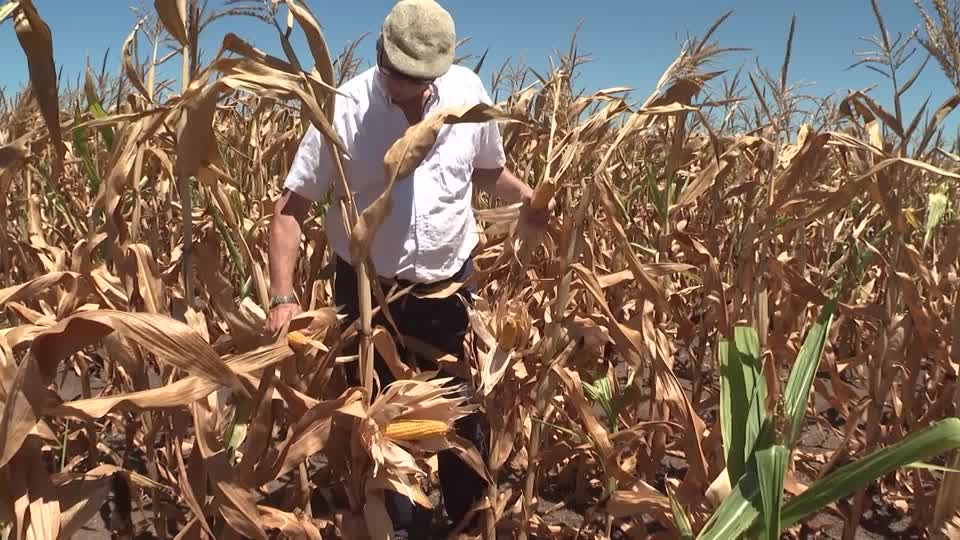STORY: Argentinian farmer Dario Sabini’s corn plants should be green at this time of year.
Instead, they are dry and crinkle between his fingers as his town suffers under a recent drought.
“We are seeing here corn that’s already gone. The plant is already yellow, it will not come back,” he said.
Sabini is a farmer in Veinticinco de Mayo, about 125 miles from Buenos Aires.
He’s one of thousands of rural farmers affected by dry and hot weather since January amid the La Niña climate phenomenon.
Argentina is the world’s top exporter of soy oil and meal, as well as the third top exporter of corn.
Dry weather has forced grains exchanges in the country to cut their forecasts for the current crop.
The Buenos Aires grains exchange currently estimates 49.6 million tons of soybeans and 49 million tons for corn in the 2024/2025 harvest.
Farmers like Sabini say the reality is likely worse.
Agro-climatologist Eduardo Sierra, who advises the grains exchange, explains:
“If it started raining now you could have 45 million tons of each crop (soy and corn). Every week that passes in February without rain, you lose 5 million tons of each crop.”
Juan Gardey is also a farmer in Veinticinco de Mayo.
Looking over his wilting soybean plants, he says they urgently need rain to improve crop yields.
“The first soybeans were doing very well, they were very beautiful up to the blooming stage and then it got complicated without water. You can see many ruined flowers from stopping during development.”
A smaller harvest could be a major problem for Argentina, which relies heavily on grain exports for much-needed foreign currency to prop up its embattled economy.
Concerned by the situation, the government of President Javier Milei last month cut taxes at least until the end of June on agricultural exports, in order to speed up grain sales.
Some experts are predicting rain to arrive in the next few weeks, but the amount and area of coverage are big unknowns.


